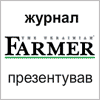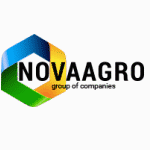Sugar market in Ukraine. Situation and forecasts

As UAC predicted earlier, the price of sugar in Ukraine stopped growing and even began to decline. From the beginning of the year, the wholesale prices fell to UAH 7000 per ton. This trend was caused by several factors. Lack of funds for the planting season was the main reason of decreade in the price of sugar, as it forced farmers to sell their own stocks of sugar, which they held in anticipation of further price increases. Also, sugar prices on the world trading floors plummeted from a peak of $755/MT in late Janaury to $504/MT on March 31, 2010, which has significantly told on Ukrainian domestic prices.
The change in prices has been affected by the beginning of the recently started sugar cane harvesting and leading analytical agencies’ reviewed forecasts of the world output and deficit of sugar. For example, a British brokerage house Czarnikow Sugar revised its forecast of world sugar deficit of 14.8 million tons to 12.6 million tons, while, at the same time, Germany-based analytical firm FO Licht sees it at 7.7 million tons. Despite this, analysts of Kingsman SA forecast an overproduction of sugar in the world reaching 4 million tons in 2010/11 MY (April-March).
As of end of March sugar stocks in Ukraine are at the level of 1 million MT, given monthly consumption at 150 MT. According to the Ministry of Economy of Ukraine, at the beginning of March this year, the import licenses were granted for 233,000 MT of raw sugar under the WTO tariff quota. Provided the entire volume of crude is imported, processed and sold in the domestic market, there will not be any shortage of sugar this year. Also, given the plans of Belarus to import to Ukraine up to 100 thousand tons of sugar in the current year, there will be enough sugar, and its price will not grow.
However, as of today the situation with sugar in Ukraine is still ambiguous. According to the statements of the Ministry of Agrarian Policy of Ukraine, in order to reduce the deficit of sugar this year, it is planned to increase the sown area under sugar beet from 320,000 ha last year to 450,000 and collect 16-17 million MT of sugar beets instead of 10.07 million MT last year. This implies an increase in the planted area by 40%, –the amount of harvested sugar beets to be up by 60-70%. It is unknown at what cost it will happen. Even the flagships of sugar production in Ukraine are planning to increase the area under sugar beet not more than by 10%.
It is unlikely that the situation will change due to state subsidies per hectare of sown beet that are planned, according to officials of the Ministry of Agrarian Policy of Ukraine, to be increased up to UAH 1000 within the framework of the State Budget which is yet to be passed for the current year. In particular, it is planned to provide assistance in two stages: UAH 500 apiece before sowing and before the delivery of the harvested crop for processing. Given that an agrarian has in average to spend UAH 8,500 and up per hectare on the full cycle of sugar beet cultivation-related works, the amount of subsidy can be of appreciable help during planting. One would like to believe that the plans of the current leadership of the country, unlike those of the previous one, will not remain mere populist statements.
So, officials plan to expand the acreage of sugar beets looks, at least, not entirely realistic.
Also, the amount of quotas for the domestic market is already known (quota "A", the distribution amount of sugar output among the sugar refinery plants of Ukraine) for 2010-2011 at 1,892,000 MT, as set by the Resolution of Cabinet of Ministers of 03.02.2010, № 96. But this document is rather of declarative nature and has nothing to do with the realities of the sugar market, as in the past year a similar normative act set the internal quota at 1,984 tons. In fact, there were produced only 1,275 MT of sugar.
Among the actions the new government should it stands to mention the amendments to the procedure of issuing licenses for import into Ukraine of raw sugar under the tariff quota WTO. Previously, to obtain a license, it was necessary to provide the original certificate of origin. Under such circumstances, the importer had to first pay for sugar, load the ship in the ports of South America or Asia, and only then receive the certificate. This certificate, along with other documents, was required to obtain a license. In case of refusal in licensing, the importer had to pay import duty at 50% of value of the goods already bought. Now this not entirely fair rule has been abolished, and the original of certificate is not required to obtain a license. This helped reduce the risks for importers and conduced to transparency of the process of obtaining licenses. So we can safely hope that this year's raw sugar will be imported in the claimed amounts.
Given all said above, we can state that the situation in the domestic sugar market is experiencing a trend toward improvement. According to UAC forecasts for the next MY, the sown area of sugar beet will be 360-370 thousand hectares, the yield expected within 11.5-12.5 million tons, which will ensure the sugar output at 1.6 million MT.
At the same time, the future of the sugar industry depends not only on the state benefits, subsidies and commodity interventions (in 2010/11 MY the Government plans to purchase 368,000 MT of sugar for the intervention fund), but also on sound economic policies of both the state in general and each player of the national sugar market in particular.
Analytical Department, UAC
- 9867 reads





